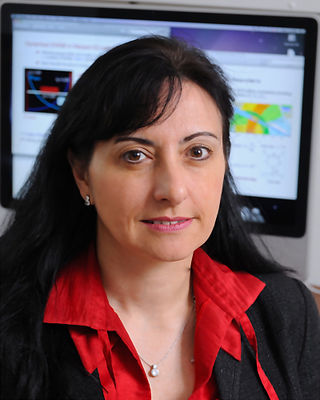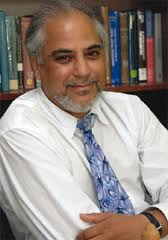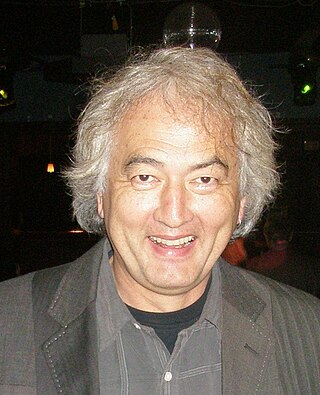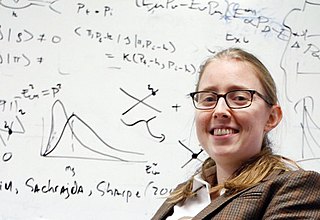Related Research Articles

Peter Ware Higgs is a British theoretical physicist, Emeritus Professor in the University of Edinburgh, and Nobel Prize laureate for his work on the mass of subatomic particles.

Sir Thomas Walter Bannerman Kibble was a British theoretical physicist, senior research investigator at the Blackett Laboratory and Emeritus Professor of Theoretical Physics at Imperial College London. His research interests were in quantum field theory, especially the interface between high-energy particle physics and cosmology. He is best known as one of the first to describe the Higgs mechanism, and for his research on topological defects. From the 1950s he was concerned about the nuclear arms race and from 1970 took leading roles in promoting the social responsibility of the scientist.

Jonathan Richard Ellis is a British theoretical physicist who is currently Clerk Maxwell Professor of Theoretical Physics at King's College London.

Roy F. Schwitters was an American physicist who was professor of physics at the University of Texas at Austin. He was formerly a professor of physics at Harvard and Stanford, as well as director of the Superconducting Super Collider.
Sir John Currie Gunn was an influential Scottish mathematician and physicist.

Edoardo Amaldi was an Italian physicist. He coined the term "neutrino" in conversations with Enrico Fermi distinguishing it from the heavier "neutron". He has been described as "one of the leading nuclear physicists of the twentieth century." He was involved in the anti-nuclear peace movement.

Marcela Silvia Carena Lopez is a theoretical physicist, and Distinguished Scientist at the Fermi National Accelerator Laboratory in Batavia, Illinois, where she is also head of the lab's Theory Division. She is also a professor at the University of Chicago, where she is a member of the Enrico Fermi Institute and the Kavli Institute for Cosmological Physics.
Kurt Gottfried was an Austrian-born American physicist who was professor emeritus of physics at Cornell University. He was known for his work in the areas of quantum mechanics and particle physics and was also a co-founder with Henry Way Kendall of the Union of Concerned Scientists. He wrote extensively in the areas of physics and arms control.

William James Stirling was a physicist who served as the first Provost of Imperial College London. He was appointed to this role in August 2013 and retired in August 2018.

Swapan Chattopadhyay CorrFRSE is an Indian American physicist. Chattopadhyay completed his PhD from the University of California (Berkeley) in 1982.

Lyn Evans CBE, is a Welsh scientist who served as the project leader of the Large Hadron Collider in Switzerland. Based at CERN, in 2012 he became the director of the Linear Collider Collaboration, an international organisation managing development of next generation particle colliders, including the International Linear Collider and the Compact Linear Collider.

John William Harris is an American experimental high energy nuclear physicist and D. Allan Bromley Professor of Physics at Yale University. His research interests are focused on understanding high energy density QCD and the quark–gluon plasma created in relativistic collisions of heavy ions. Dr. Harris collaborated on the original proposal to initiate a high energy heavy ion program at Cern in Geneva, Switzerland, has been actively involved in the CERN heavy ion program and was the founding spokesperson for the STAR collaboration at RHIC at Brookhaven National Laboratory in the U.S.

Peter Jenni, is an experimental particle physicist working at CERN. He is best known as one of the "founding fathers" of the ATLAS experiment at the CERN Large Hadron Collider together with a few other colleagues. He acted as spokesperson of the ATLAS Collaboration until 2009. ATLAS is a world-wide collaboration which started in 1992 involving roughly 3,000 physicists at 183 institutions in 38 countries. Jenni was directly involved in the experimental work leading to the discoveries of the W and Z bosons in the 1980s and the Higgs boson in 2012. He is (co-)author of about 1000 publications in scientific journals.
Mohammad Sajjad "Saj" Alam was a Bengali Pakistani and a naturalized American particle physicist. His work focused on particle physics and computational physics. He played a significant role in several major particle physics experiments that led to new discoveries in the area of high-energy particle physics.

Eric Henry Stoneley Burhop, was an Australian physicist and humanitarian.

Johanna Barbara Stachel is a German nuclear physicist. She is a professor in experimental physics at the University of Heidelberg. Stachel is a former president of the German Physical Society (DPG).
Natalie Ann Roe is an experimental particle physicist and observational cosmologist, and the Associate Laboratory Director for the Physical Sciences Area at Lawrence Berkeley National Laboratory (LBNL) since 2020. Previously, she was the Physics Division Director for eight years. She has been awarded as the Fellow of American Physical Society (APS) and American Association for the Advancement of Science (AAAS) for her exceptional scientific career and contributions.
Xiangdong Ji is a Chinese theoretical nuclear and elementary particle physicist.
John Dirk Walecka, often quoted as J. Dirk Walecka is an American theoretical nuclear and particle physicist. He is a fellow of the American Physical Society and the author of numerous textbooks in physics. Walecka is currently the Governor's Distinguished CEBAF Professor of Physics, Emeritus at the College of William and Mary.

Phiala Elisabeth Shanahan is an Australian theoretical physicist who lives and works in the United States. She is known for her work on the structure and interactions of hadrons and nuclei and her innovative use of machine learning techniques in lattice quantum field theory calculations.
References
- 1 2 3 Rosanne Walker. "Thomas, Anthony William (Tony)". Encyclopedia of Australian Science. Retrieved 19 May 2012.
- 1 2 "Anthony Thomas: Brief Biography". University of Adelaide. Retrieved 19 May 2012.
- ↑ "2014 South Australian Science Excellence Awards Winners". Government of South Australia Department of State Development. Archived from the original on 16 August 2014. Retrieved 21 August 2014.
- ↑ Stehle, Mark (25 January 2020). "Australia Day Honours 2020: Full list of recipients". Sydney Morning Herald . Nine Entertainment Co. Retrieved 25 January 2020.
- ↑ "Particle physicist Professor Anthony Thomas named SA Scientist of the Year". ABC News (Australia) . 11 August 2014. Retrieved 3 May 2020.
- ↑ "APS Fellow Archive". APS. Retrieved 24 September 2020.
